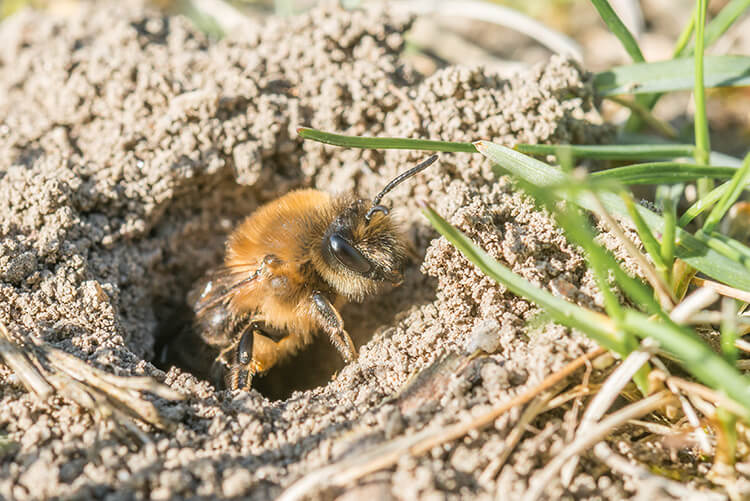
Ants & Bees
Ants and bees are common in the lawn. The ant can be a major problem cutting away grass roots and building ant hills to use ant killer poison and bait traps
Mysterious holes and mounds that form in the summer lawn!
Ants in the Lawn
Ant life is in full swing in the summer as they tunnel away building vast breeding chambers below the surface of the soil. As they dig, the excavated soil starts forming mounds or ‘ant hills’ above ground.
They like dry or freely draining soils with most ant activity occurring in patios, paths and driveways. However, they can and do live in lawns forming quite large hills which are unsightly and a problem for the mower. In addition the ants will cut the roots of your lawn away to make way for their tunnels. Ouch!
If you notice ants and need to get rid you need to use products that will not harm the grass. You can use enclosed Ant Bait Stations containing poison that the ants take into the nest. These are also good as a preventative as they can be left in place. For something a little more instant use Ant Killer Granules. These can be spread dry or dissolved and sprayed without leaving powder residues.
Dry and warm summers give the ants more opportunity to breed and spread. Young queen ants leave the nest through the summer creating new ant populations without any visible sign. Come the spring the following year the problem is back again as these new nests grow rapidly. Vigilance is recommended and if you can get on top of the problem early enough you can have good control with few ant hills throughout the year.
Getting rid of the hill can also be a problem. The soil has come from below ground and unlikely to sink thereby causing serious mower problems. Your best bet therefore, is to brush or sweep the hill and disperse it over the lawn. An old vacuum cleaner would be the ideal tool for removing the hill.
Bees
These are not your regular bumble or honey bees but miner bees. They’re quite cute as far as bees go with no sting so you can carry on using the lawn. They turn up as the late spring weather warms and are usually gone within a couple of months.

They excavate small holes in the ground for nests which cause very little damage and possibly adding beneficial aeration. If the excavated soil, which looks like a mini volcano, causes a problem you can easily sweep this up without causing any problems to yourself or the bee.
These are interesting insects and responsible for a lot of pollination making the world a better place. You should be pleased to have them (a few anyway) in your lawn.